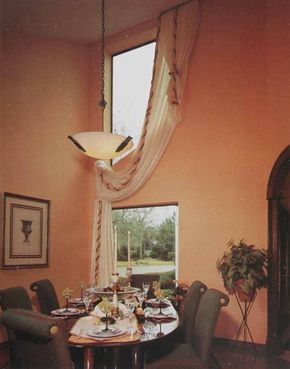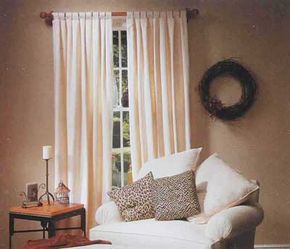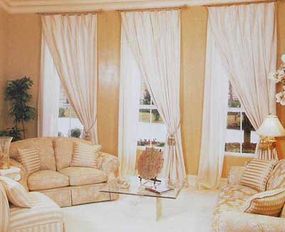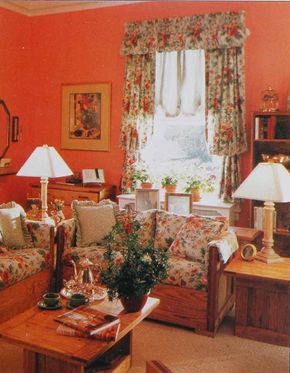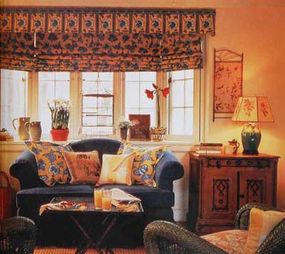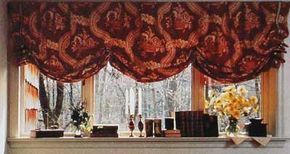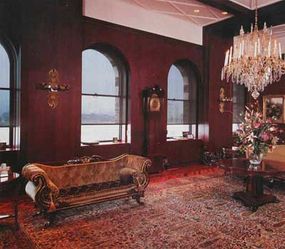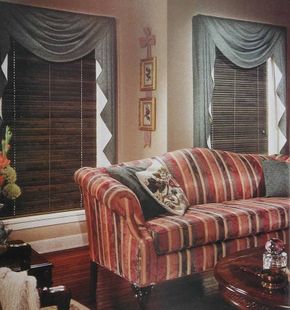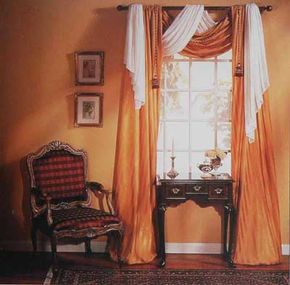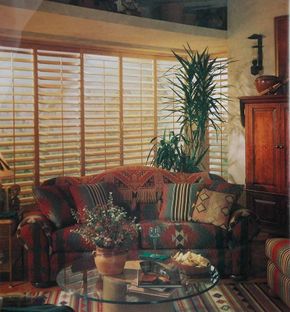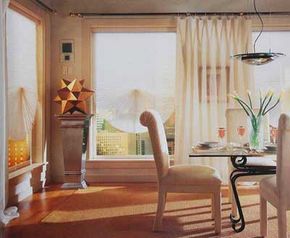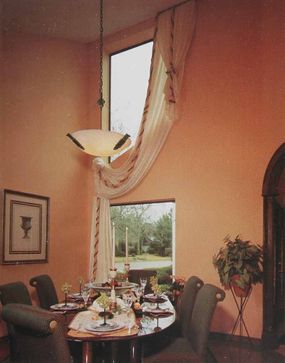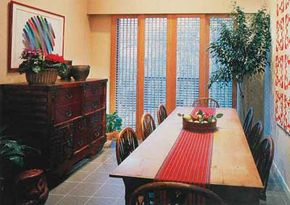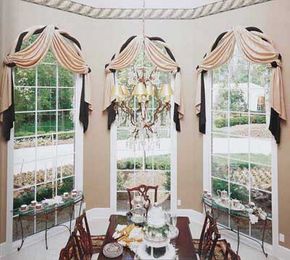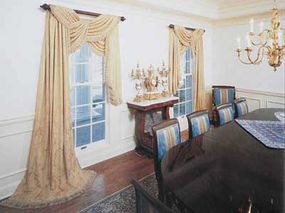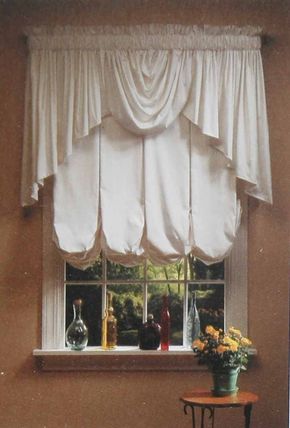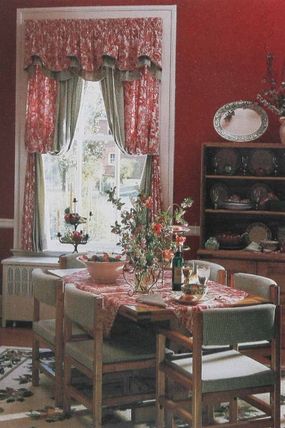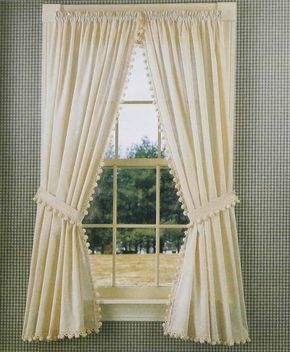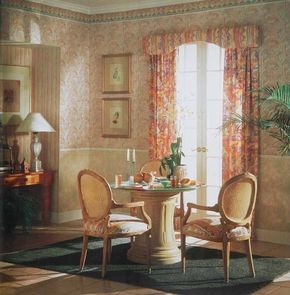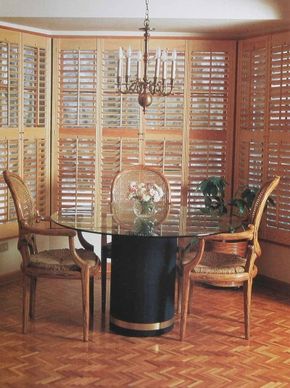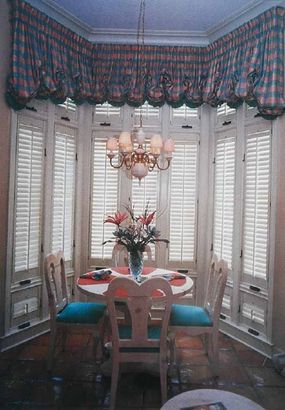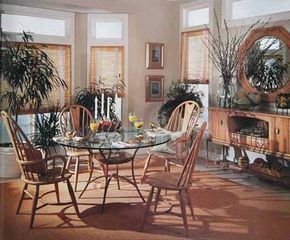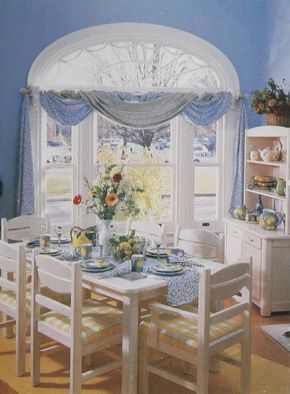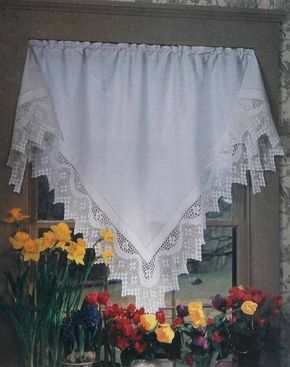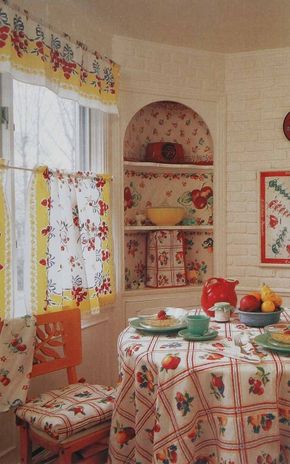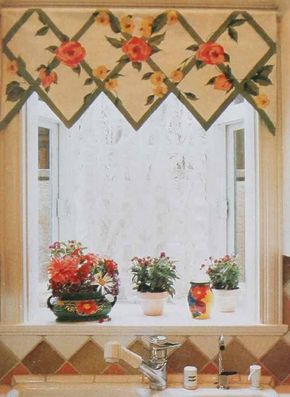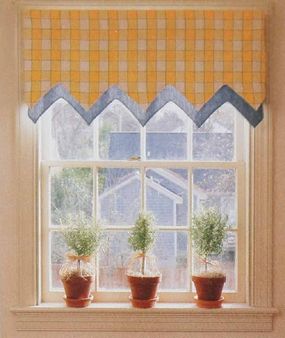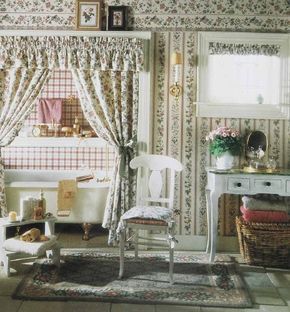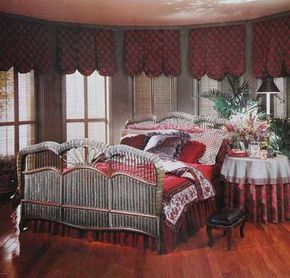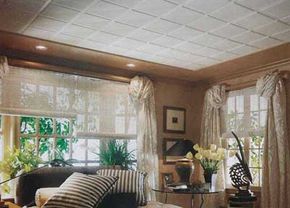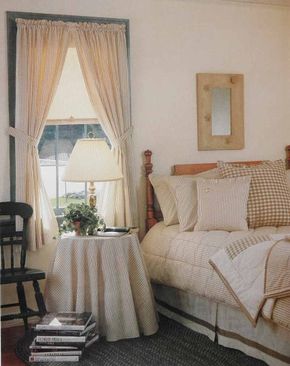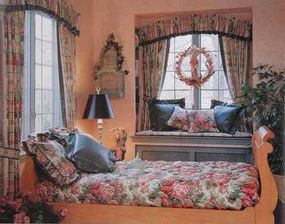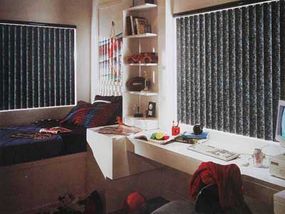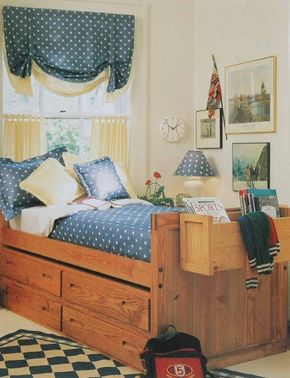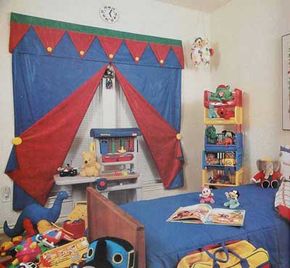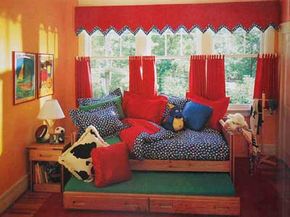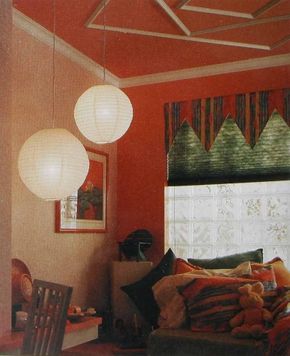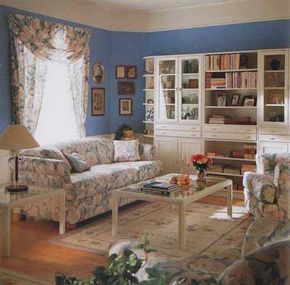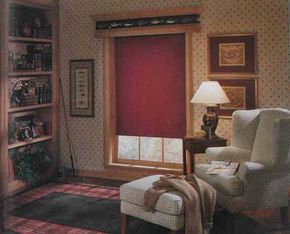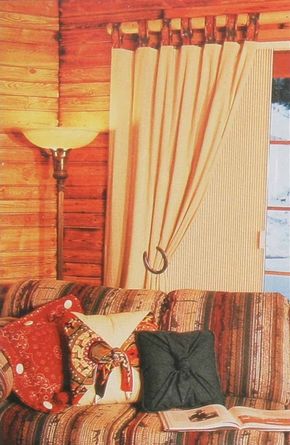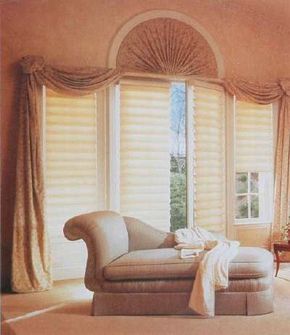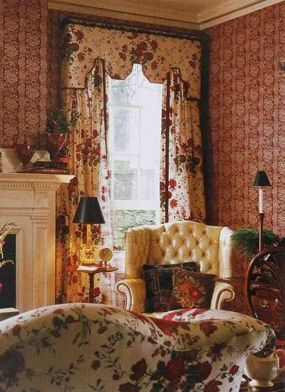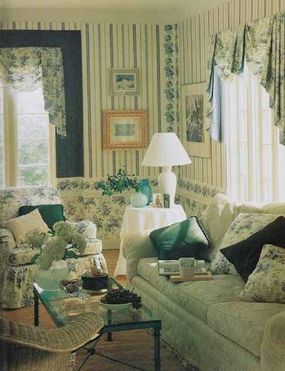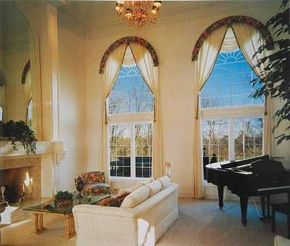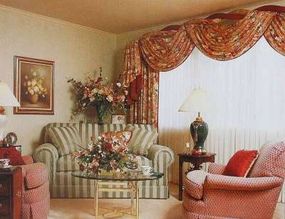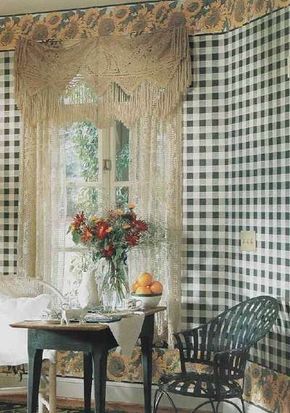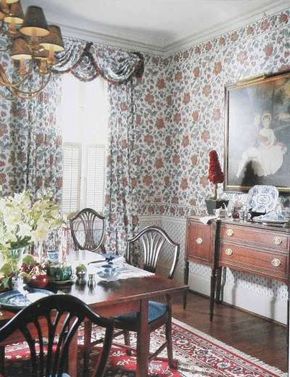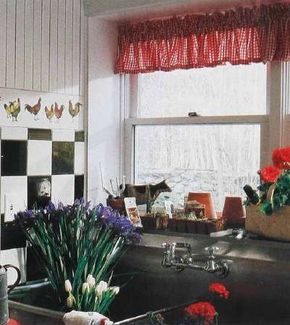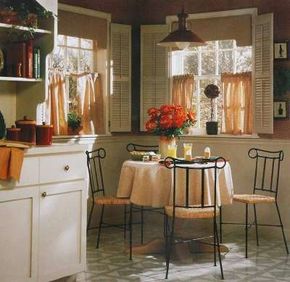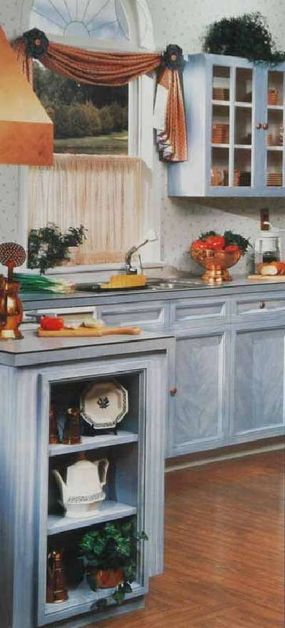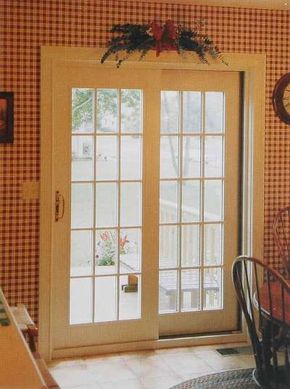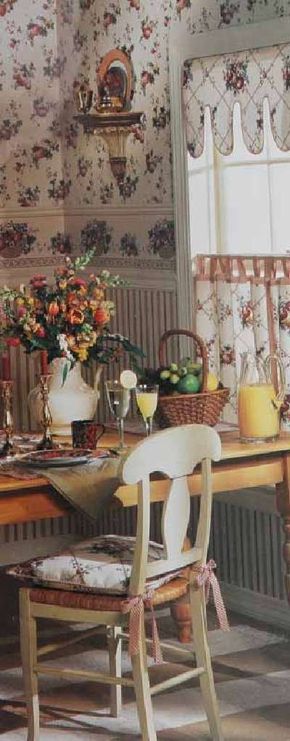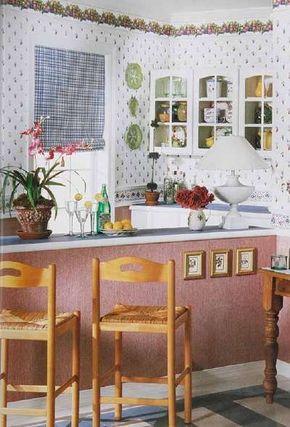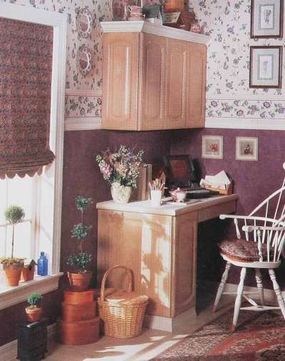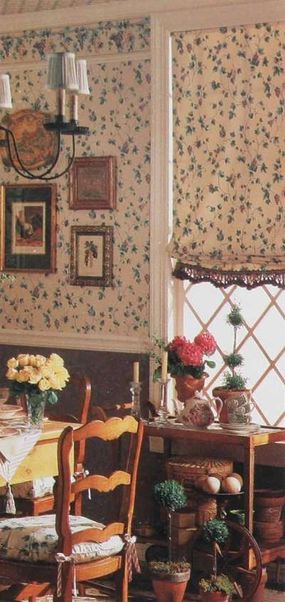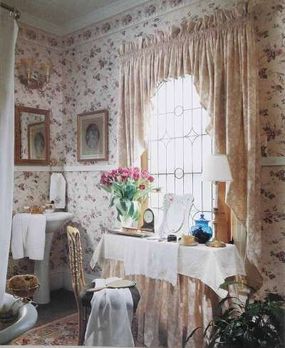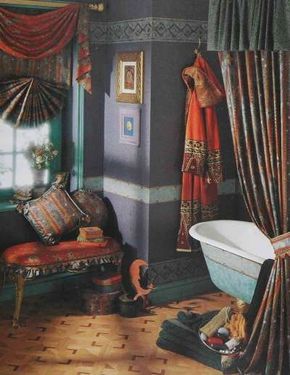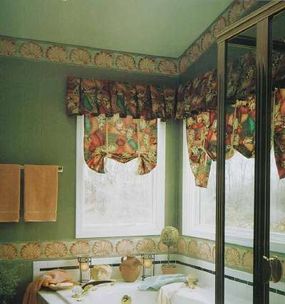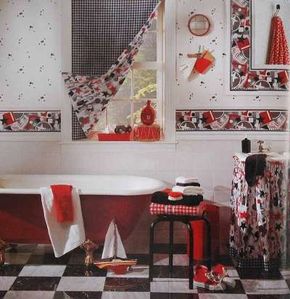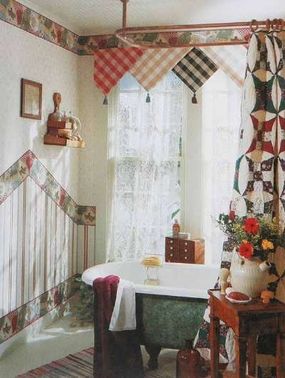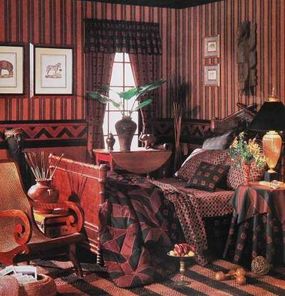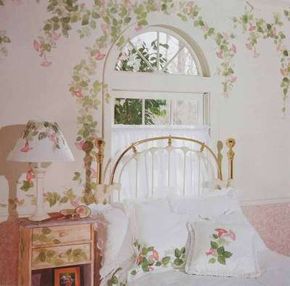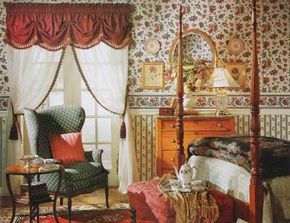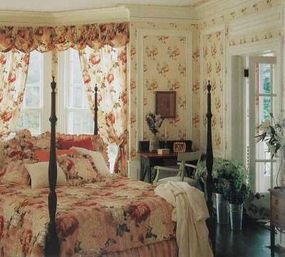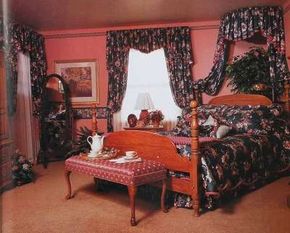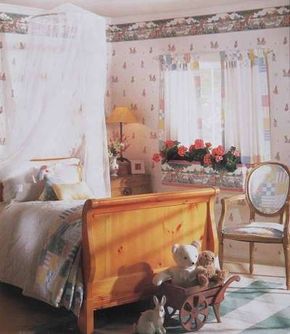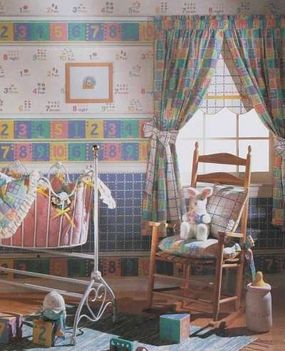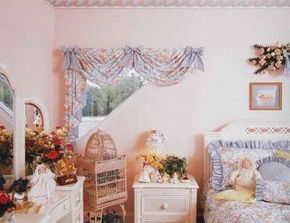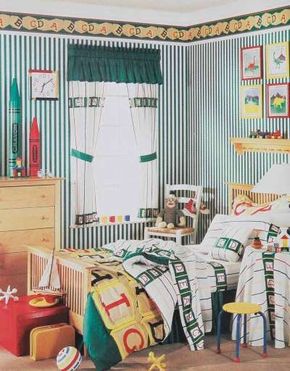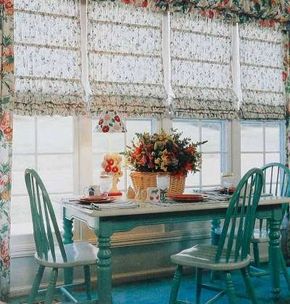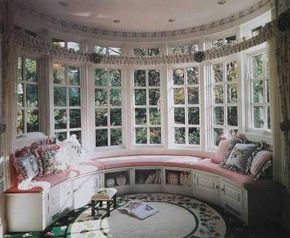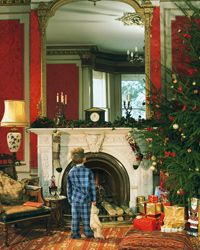If eyes are the windows to the soul, then surely the windows of a house are a gateway to the essence -- the soul -- of the home. No wonder that the way windows are dressed is one of the most important decorating decisions facing the homeowner.
In this article, you'll be able to see dozens of window treatments for a variety of rooms, complete with helpful pictures to capture the essence of the room. From flowing curtains to matchstick shades, you can find the perfect window treatments to decorate your home.
Advertisement
Window treatments are more than a decorating decision; they are also a very practical one. Curtains, shades, blinds, shutters -- or any combination of these window dressings -- must also serve a functional end: to admit or block sunlight and to provide privacy. Window treatments need to do far more than look good. They must work well, in addition.
Before deciding on a style or look for window treatments, homeowners must first analyze their needs. How important is privacy? First-floor living and dining rooms facing the front of the house, with a street view, require a greater privacy shield at the windows than rooms to the rear or upstairs. What direction is the room's exposure? If it's to the south or west, window treatments that screen or block intense sunlight may be desired. In cold climates, windows with a northern exposure may need a window treatment with a high thermal factor for energy efficiency.
And some windows require one additional practical consideration: the window's architecture. Some windows are inherently more attractive than others. When the window itself detracts from rather than adds to the space -- whether it's squat, too thin, devoid of appealing wood trim, or awkwardly positioned -- the window dressing can camouflage the architectural imperfections, making the window a more visually appealing feature.
At the opposite extreme, some windows are the grandest architectural statement of the room. In this case, the modernist "less is more" philosophy can be embraced, even if the room's design is 18th-century traditional. It's a shame to hide the beauty of a window under scads of swagged, draped, and puddled fabric. An overzealous window treatment can even overpower the architecture. If leaving beautiful windows bare is not an option, they can be dressed in more understated treatments that complement the architecture.
Once the windows' utilitarian needs are addressed, the fun begins: How to make the solution sizzle with personal style, enhancing the overall decor of the room. Perhaps the windows can even make the strongest decorating statement as the room's pièce de résistance.
First, decide on the room's style: contemporary, traditional, country, or eclectic. This will provide parameters for finding the appropriate window dressing. Damask draperies ornamented with velvet braid, silk fringe, and decorative rosettes obviously are not a consideration for a streamlined, contemporary style. For a traditional room, vertical blinds may be too contemporary a solution, unless a touch of contemporary's clean, unfussy style is desired. In a country room, treatments that carry forth the style -- tab curtains, simple panels made from retro fabrics, or nostalgic lace panels -- can be effective.
One-of-a-kind window dressings that defy convention, stepping out on a limb for self-expression, should also be considered. These are especially appropriate in an eclectic public space, or in a bedroom, where more personal ideas can be used. Mural-painted trompe l'oeil or custom-cut wood valances, for example, can add character to a room in a way no furnishing, no matter how creative, can provide.
Color, pattern, and texture are other design tools that play an important role in window dressings. If the room already features a bright, bold color at the walls, a more subtle palette may be preferred for the window treatment. Or, to avoid a deluge of one color in the space, the color wheel may be consulted to find the right complementary or analogous colors to be used on the window dressings.
In a room without much pattern on the walls and furnishings, the windows make available an ideal opportunity to provide the space with the visual movement and rhythm that a pattern can give. Remember, too, that window treatments can include more than one pattern, with complementary prints used as the main fabric, lining, and trim. Conversely, tread lightly with pattern at the window when an abundance of prints has been included elsewhere in the decor. A cacophony of mixed prints creates a visual discord that's hard to live with.
Make sure window treatments inject the appropriate texture to balance a room. Too often, texture is overlooked as a consideration, even though it can entirely alter the ambience of a room. For a hard, predominantly wood-filled space with few upholstered pieces, select soft, voluptuous curtain fabrics. In a carpeted room with plain drywall or plaster at the walls, consider wooden blinds or shades to inject the warmth of natural wood tones. Or create a mixture of textures in a single window treatment to provide textural richness and depth.
When both practical and decorative issues are addressed, window treatments become one of the most effective design statements in the home, expressing the personality of the owners while working to meet their lifestyle needs. In the pages that follow, you'll learn how to strike the perfect balance between necessity and design, creating beautiful and functional window treatments that will make any room uniquely yours.
For more decorating ideas around the home, see:
Advertisement
